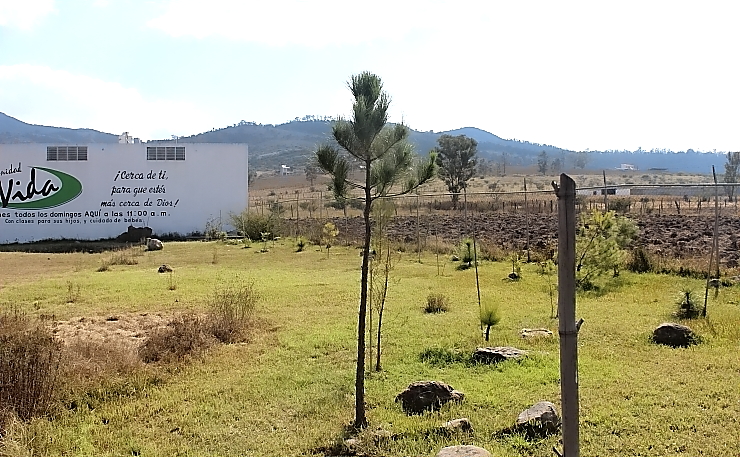
Eighteen months ago, I wrote about a particular passion project of mine, which is to create a mini-forest on part of our church’s one acre of land. This project qualifies as “afforestation”, which is the creation of a forest in a site that was not originally forested — as opposed to reforestation, which creates a new forest on a site that was previously forested but has been logged.
Creating a new forest is my way of turning intense frustration into positive action. Birding in the developing world means being a witness to constant habitat destruction. So I am attempting to respond, by creating new habitat.
I try not to talk too much with my long-suffering congregation about birds. But I do have to mention “mis arbolitos” (my little trees), since they are growing on the church lot itself. So I am happy that this year many of mis arbolitos have finally reached a size where they can be noticed from a distance. Now they know I’m not just making this all up.
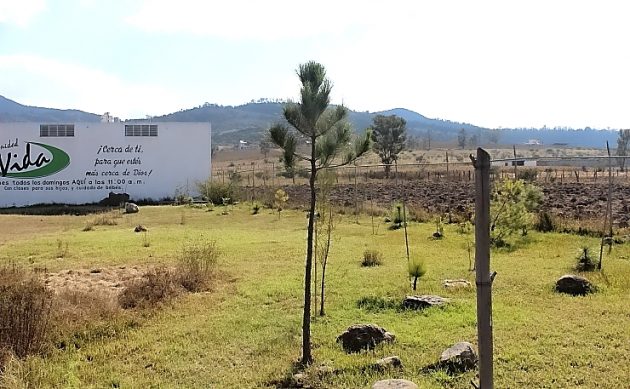
Look, real trees you can actually see!
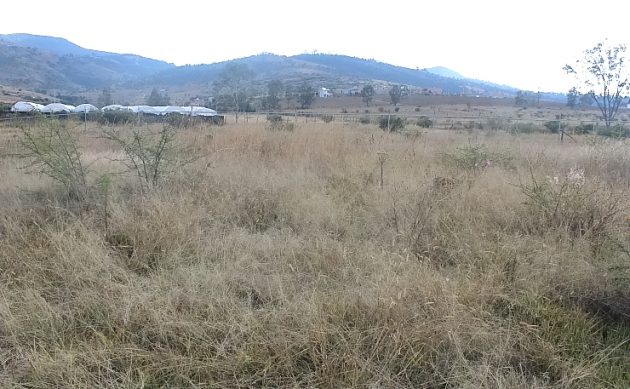
This is what was there before my “forest”.
The classic highland forest in Michoacán is known as pine-oak forest, and many of my 22 pine trees are now at least knee high, while three are already chest high, and one (my only surviving pine purchased from a commercial nursery) is taller than I am. Most of these pine trees were bought from reforestation nurseries, for fifty U.S. cents each. (Because of their availability and low price, I have not learned to grow these from seed.) The same price also bought me five cedros blancos, which, in spite of their name of “white cedars”, are actually native cypresses. These are also chest high, after only one year in the ground.
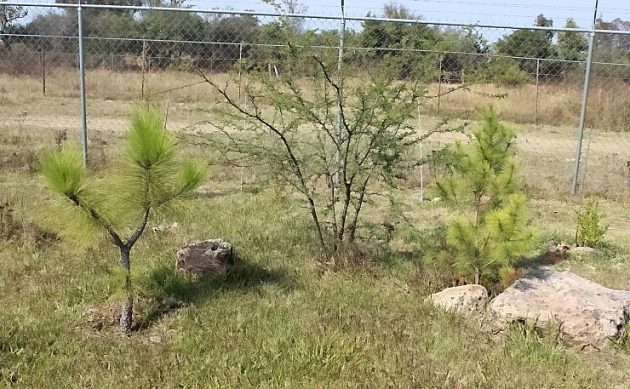
On the left is a Michoacán pine; on the right is an Ocote pine (named for a resinous pine wood used as fire starter kindling).
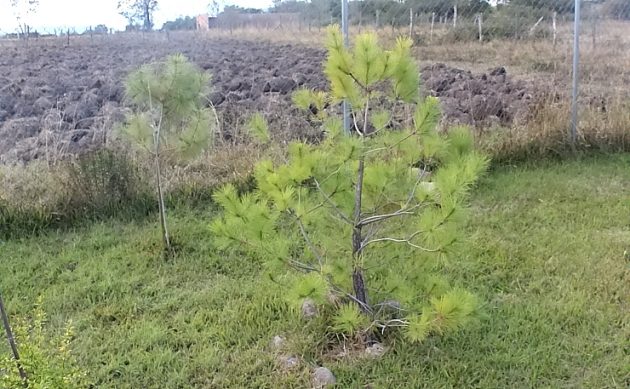
This Ocote pine is almost my height, but took five summers to reach that height. The pine to its left (I’m not sure which variety) has only been in the ground for 18 months.
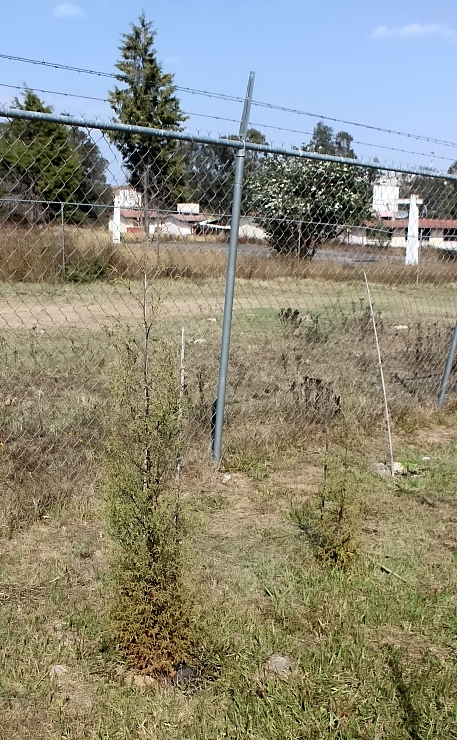
These Cedros may look skinny, but they have grown from a few inches to four feet in a year and a half. That’s an adult Cedro on another property, in the background.
The ahuehuete, or Mexican Bald Cypress, is a tree with a rich relationship to Mexican history. It is also beautiful, and is one of the few trees I have been willing to spend real money on (two-to-four dollars each). I now have three chest-high ahuehuetes growing on the lot, as they are well adapted to our wet/dry climate.
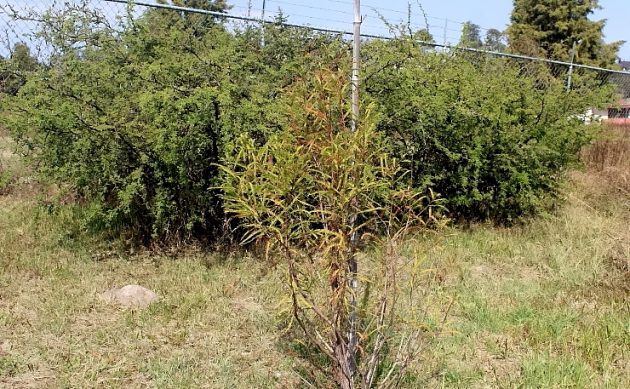
Bald Cypresses have soft needles that can drop in the winter, and will grow happily in swamps. But the Mexican Bald Cypress can handle our dry winters as well. I plant them on the wettest parts (in summer) of the church property.
Unfortunately, while conifers may be our easiest native trees to purchase, they do not offer all that much to birds in the way of food. In contrast, oak trees are our native avian supermarkets; but I have yet to find a reforestation or commercial nursery that offers them. So I have had to climb a steep learning curve to learn to grow them from seed, or rather, from acorn. Two oak seedlings I was given in 2018, by a botanical garden, are still growing today. Since then, I have managed to grow eight more from acorns. Half of these were started just last year, so I have real hope for the future. My goal is to someday achieve a typical Michoacan mix of 40% pines, 40% oaks, and 20% other tree species. (I picked up some 30 apparently viable acorns just this morning, for the next crop. Viable acorns don’t float in water.)
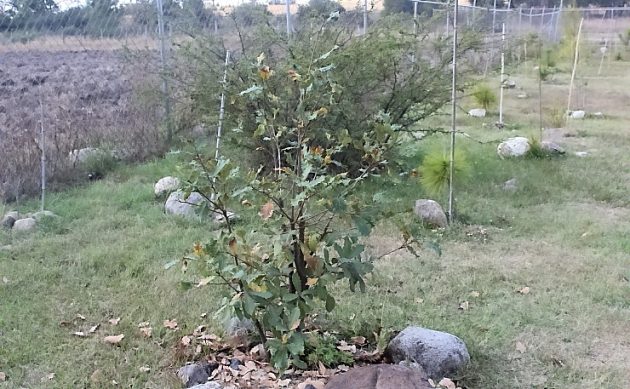
This is one of my two oldest oaks. It looks a bit shaggy now, during our dry winter. But It doubled in size last spring, so I would say we are off to the races.
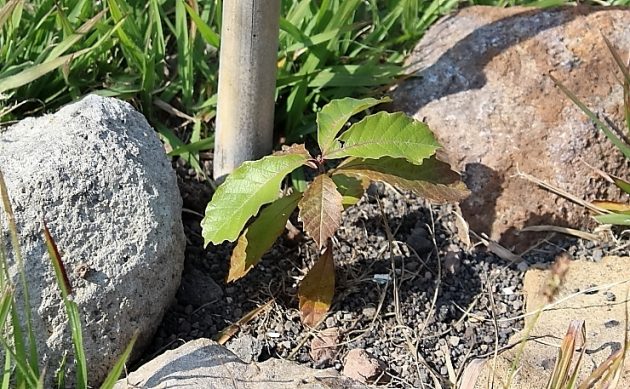
This lovely little oak was an acorn in June.
As for the other species, they include two tejocotes (Mexican Hawthorn, a tree that produces crabapple-like fruits), four colorines, a native coral tree that produces tubular red flowers for the hummingbirds, an equal number of guamúchiles, which produce seeds surrounded by an edible white pulp, one native chokecherry, one ash tree, a parotilla, and two ceibas (kapok tree). I have also planted many prickly pear seedlings and cuttings, as this cactus produces both flowers and fruit for birds. And I have protected and cared for other native plants that have turned up on their own, particularly granjenos, which have now begun to produce their first tasty red fruits.
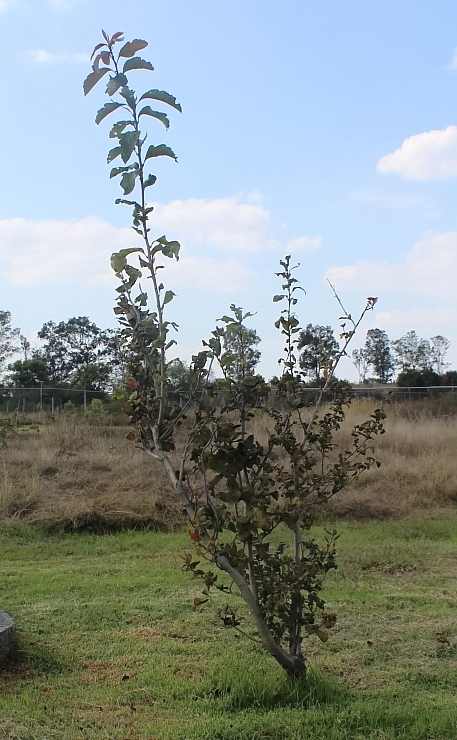
After acting like a bush for several years, this Tejocote suddenly decided to be a tree this fall, and sent out this one leading shoot. I think it’s looking forward to a big 2023.
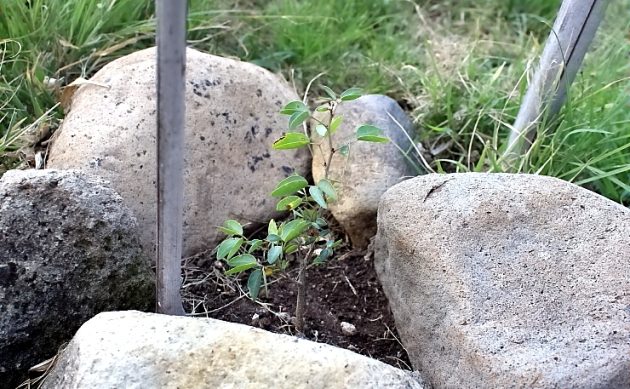
This Guamúchil seedling is only 7 months old.
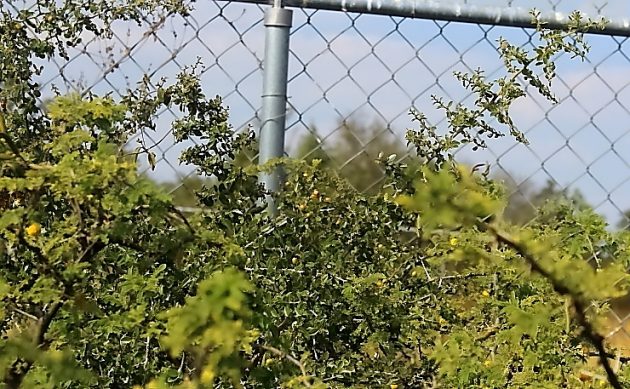
You can barely see the first Granjeno fruits in the middle of this photo. They will eventually turn a deep red. Birds love them, and so do I.
Of course, a forest does not consist only of trees. I managed to successfully start some wild grape vines this summer. I also planted a purchased blackberry plant. And my botanist friend gifted me some cucamelon seeds; this wild cucumber (native to Mexico) looks exactly like a tiny watermelon. I hope to show a photo someday soon… but they have to sprout first.
I have also planted a good number of non-native ornamentals and fruit-producing trees in the more visible part of the property: citrus, jacarandas, mulberries, a peach and a guava, etc. This is a bit of a concession to what most people consider “a garden”. Pomegranate trees have also sprouted everywhere, because our home tree contributes excess fruit to my compost piles.
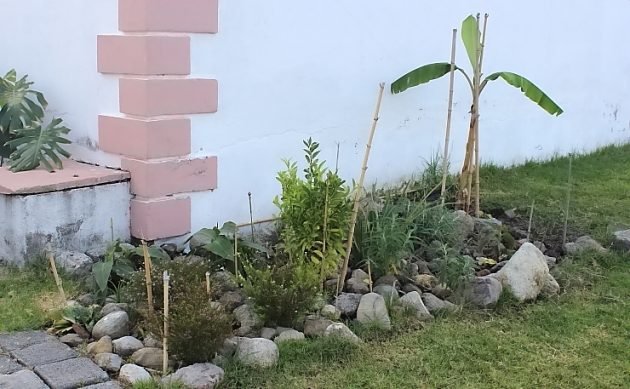
One of my 2022 projects was this traditional, non-native bit of a garden.

Pomegranate trees with fruit do an excellent imitation of Christmas trees. This one also decided to act like a tree a few months ago, and grew a couple of feet.
But my #1 goal continues to be the establishment of a self-sustained, diverse native forest. Unfortunately, that involves a temporary process of grass trimming, fire supression, and watering. But I am already watering the better-established trees much less, and once these grow deeper roots, get taller, and start shading out most grass and forbs, they should be fine left to their own resources. One pine tree, which attrition left too far from the other remaining trees for me to bother watering, has surprised me by doing just fine without it. The goal is in sight!
For the birds.











Very cool, Paul. Thanks for sharing your noble efforts!
Thanks for the encouragement, Mike! It occurs to me that some figures might be helpful for our readers: The property is half a hectare, or about one acre, but I have only planted perhaps 15% of it. (Though I try to keep 60% trimmed, to lessen potential damage from brush fires.) There are just over 100 planted trees on the property, as well as some self-sown local trees I care for. Only a half dozen trees were purchased full price from local nurseries; all the rest were bought for 50 cents a piece from reforestation nurseries, were donated by church members and friends, or were started from wild-collected seeds. I always plant in my home’s compost and in recycled pots, so there is no expense there. The main outlay has been gasoline and repair costs for the wire cutter. (It looks like time to buy a new one of those, so I will finally have to spend some real money on my project.)
Reforestation/afforestation does not have to be expensive to be effective.
What an inspiring story! Planting and nurturing native plants is beneficial for everyone involved – thank you for sharing your project and good luck. I’m involved in similar restoration work in eastern California and rejoice over the survival of every native I plant.